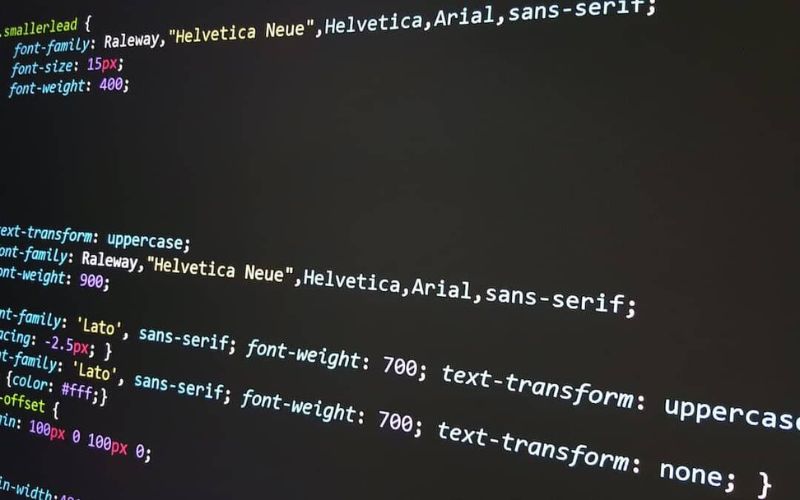You may have
a favorite website with great functionality or simply one with an outstanding
aesthetic appeal if you think about it.
You can
attribute much of the ease and joy you experience when browsing a website to
the efforts of the front-end developer.
The process
of developing a website involves both writing and analyzing coding as well as
maintaining the various applications and processes that drive businesses and
organizations, including non-profits and national e-commerce giants.
It does not
matter that a backend developer is responsible for creating the infrastructure
for a website so that queries, data requests, and innovative search structures
can be accommodated; a frontend developer is responsible for ensuring that all
of these things are accessible and convenient before users are even able to see
them.

In the field
of front-end development, a wide variety of skills are required, especially in
terms of user experience and user environment.
As companies
have shifted their focus to the online market, front-end development skills
have become increasingly important in the job market.
It is
necessary to possess these skills in order to qualify for various web-related
jobs, including those related to web integration and design.
With
customers increasingly expecting a fast, responsive, easy-to-use website and
app, businesses in nearly every industry - from healthcare to education to
financial services - are seeking out good front-end developers.
Front-end developer skills
needed
Below, we
have mentioned some of the most important front-end developer skills needed.
Keep reading.
HTML/CSS
Front-end
developers have become increasingly dependent on HTML and CSS to enhance their
advertising over the last few years.
The ability
to understand HTML HyperText Markup Language is crucial to the creation of
websites in the world of software.
In its
simplest form, CSS is the combination of the first two letters in CSS. It
controls the look of a website that is built using HTML. It changes such things
as layout, colors, fonts, and even how the site looks as a whole.
JavaScript / jQuery
Although
knowing JavaScript JS is essential for front-end developers, it is also
imperative for web developers to know it.
A stylish
presentation of a website's content can sometimes suffice, but for some
websites, interactive features are required. JavaScript can assist in this
situation.
Through the
jQuery library for JavaScript, you can add a wide variety of extensions and
plugins to your website easily and quickly, as it allows you to implement a
variety of plugins on the website.

Learning
JavaScript, in a sense, enables you to integrate a variety of plugins into your
site easily.
DOM Manipulation
Any web
document may be represented by DOM, a proprietary programming interface that
represents the structure, content, and style sections of the document, including
HTML and style sections.
Through
manipulation and interaction with the DOM, you can change the appearance of any
web page's content.
In order to
interact with the elements of a website, developers can use DOM structures that
transform each part into nodes and objects. This can be achieved using a
language like JavaScript or any other object-oriented programming language.
It is
through the use of these APIs that front-end developers may offer users a
better experience with their website, whether this is through the display of
content in a language of their choice or through the ability to interact with
it via a webcam.
A
foundational skill for front-end developers is the ability to manipulate the
Document Object Model (DOM), which is vital when creating interactive websites
that allow users to manipulate images, store information, or control their
digital experience.
As part of
front-end web development, DOM manipulation technologies are used to match the
content that is displayed on the website with the preferences and needs of the
user.
The first
thing you need to keep in mind is that your users are not the same, so you may
want to use DOM manipulation to create responsive web experiences.
Frameworks and Libraries
In
application frameworks, there are a number of modules that incorporate features
that are common to all websites, such as registration and search.
Architects
should be aware that JavaScript frameworks can be easily used and reused. An
example of such a framework could be AngularJS, Ember, and ReactJS.
It is
possible to enhance a website by adding plugins and extensions by utilizing
prefabricated components from libraries available on the web.

Let us
consider the case of a countdown timer on the website of a retailer JQuery is a
popular JavaScript library that offers many customizable features that can be
used to create any design.
▶️ Related: Top Website Design Ideas in 2022
JSON
Over the
past fifteen years, JSON, a format developed from JavaScript, has become the
most widely used format for representing web data. It provides a textual
representation of data that is commonly used on the Internet.
A few
examples include databases such as MySQL and PostgreSQL which are commonly used
for the underpinning of websites, both of which support native JSON queries and
data storage.
Data in this
format can be processed in a variety of programming languages, and information
can be passed between users of your website regardless of whether the
information has been stored or processed after being passed through the site.
Because JSON
facilitates data exchange between web servers and users, it is an essential
component of any website that exchanges data between users and web servers.
Version control
Software
development relies on version control systems in order to track the changes
that have been made to software over time.
In addition
to providing developers with the ability to compare earlier versions of code
with earlier versions, these tools also enable developers to revert back to
earlier versions using earlier versions of code.
Thus, version
control systems can be useful for providing a backup of the original source
code in order to facilitate its easy restoration.
Developers
and teams can collaborate using the Git version control system by uploading and
downloading source code changes.

AJAX
In
client-server architectures, AJAX is used to communicate information between
the client and the server in front-end applications developed using Javascript
and XML.
Clients,
such as the web browser the customer is currently using, can use the AJAX
mechanism to send requests to servers and receive responses without needing to
reload pages.
In light of
the fact that AJAX is asynchronous, it does not freeze until a response has
been received from the server. Instead, it processes the JavaScript request
behind the scenes and updates the DOM to reflect the response received from the
server.
Users of
Facebook, Twitter, and other social media sites are kept up-to-date via their
timelines by utilizing AJAX-based interactions.
Since AJAX
is almost always tightly integrated into popular websites' frameworks, it
illustrates users' expectation that they should be able to load their sites
immediately without much effort after visiting them.
Cross-browser and device
testing
Due to the
differences in the display between browsers, developers have developed tools to
deal with this issue by implementing a variety of techniques.
With the
latest web browser tools available based on the web browser being used by the
developer, they can test and fine-tune their web pages.
Additionally,
responsive design techniques are used by developers to ensure optimal
performance on the site. These techniques adapt the layout and design of the
site to the device being used to access it.

In contrast
to a desktop website accessed on a PC that utilizes a larger font and a larger
screen size in comparison to mobile website accessed on a mobile device, a
desktop website on a PC utilizes a large amount of screen real estate and a
smaller font.
Node.js
When you are
a front-end developer, you are always looking to make sure your users have the
best possible experience when using your website. This means eliminating
unnecessary delays and waiting times.
When using
NodeJS as a JavaScript runtime environment, you will minimize delays and have
the ability to process a large number of requests at once in order to provide
the best possible user experience for every individual user over the long run.
This is a
powerful technology for building backends for web applications, but it can also
be utilized for a variety of other purposes.
Nodejs has
also been found to be useful as a minimalist framework for writing applications
in addition to its speed and ability to deliver an extraordinary user
experience.
Search engine optimization
Through
search engine optimization, websites can achieve a higher ranking in search
engines and increase organic traffic.
Normally,
search engine optimization practices for a website are overseen by a separate
team, but if you are familiar with the basics, you can put titles,
descriptions, and text in the appropriate places to improve the search engine
optimization of your site.
React
It is
possible for front-end developers to construct user interfaces with the React
JavaScript library by describing and declaring how they wish to alter the
document DOM or how they wish for the user interface to appear. Thus,
developers can utilize React in the development of front-end applications.
It is
important to note that despite the fact that HTML and React have many
similarities, React also provides dynamically changing data to complement HTML.
As React is
based on the JavaScript library, it can be adjusted quickly and dynamically
according to how the user interacts with a site.
The DOM of
React is updated automatically as a result of user requests, and it is
compatible with several JavaScript technologies.
There is a
lot of interest in this framework because it creates HTML using JavaScript
instead of improving and refining pre-existing HTML.
▶️Read More: The Best Tools and Resources for Web Designers
Problem-Solving
It is
important for any front-end developer to have the ability to solve problems.
Although the ability to solve problems is not as technical as HTML, CSS,
JavaScript, or any other implementation of those technologies, it is still an
important part of their job role.
Problem-solvers
who possess the ability to solve problems relating to other things are more
likely to be able to solve code-related ones as well.
A lot of
good problem-solving is accomplished by breaking things down into smaller
components and addressing each one as it emerges".
Having
worked in front-end development for many years, you have a great deal of
experience in solving problems in the workplace and at home. The things you've
learned can be applied to your efforts in front-end development with a little
effort.

To succeed
as a front-end developer, it is imperative that you demonstrate ingenuity and a
willingness to attempt challenges as you explore your options, whether you are
looking to earn a bachelor's degree in computer science or participate in
coding boot camps.
Conclusion
All in all,
there are so many skills beginners must know in front-end development careers.
If you are
looking for an expert web development team that knows when to use front-end web
development skills, we recommend you consider our team.
Our
specialists provide you with the best services in web, desktop, iOS, and android
app development. So do not hesitate to contact us to see if we can help you
boost your online business.